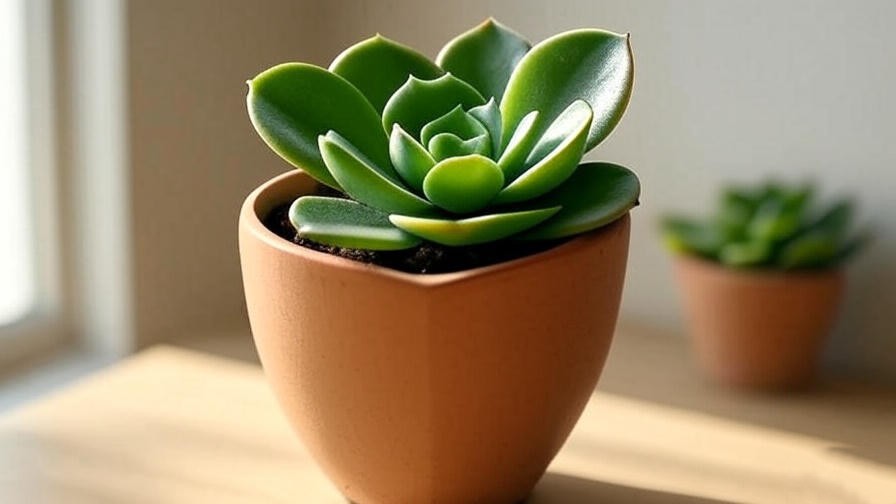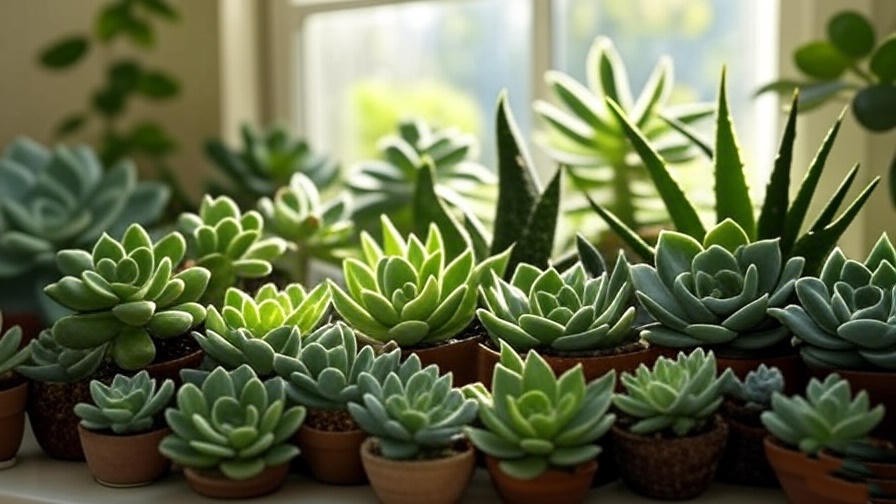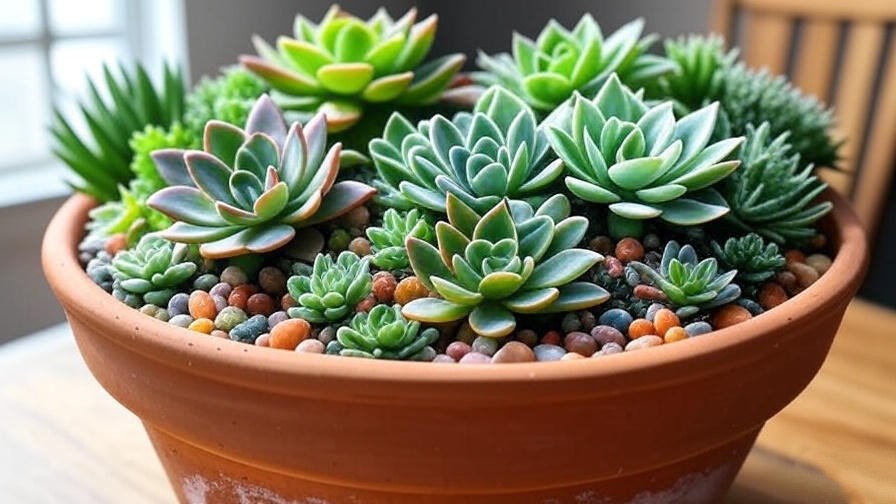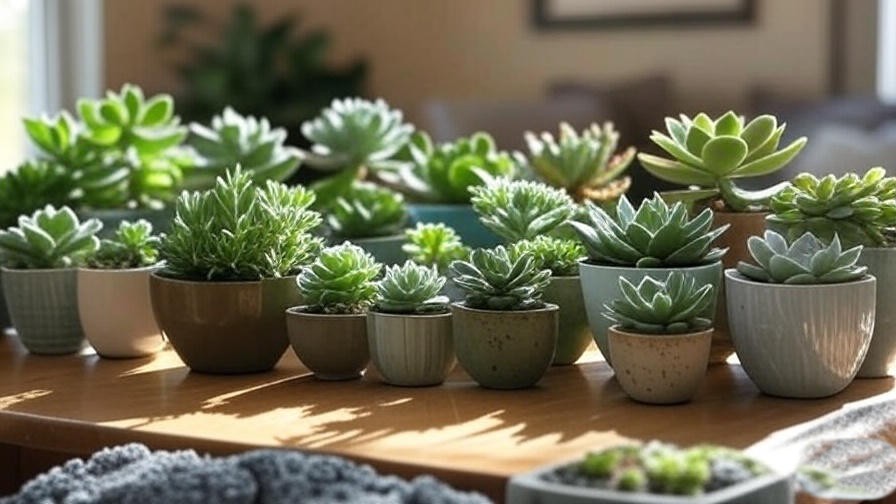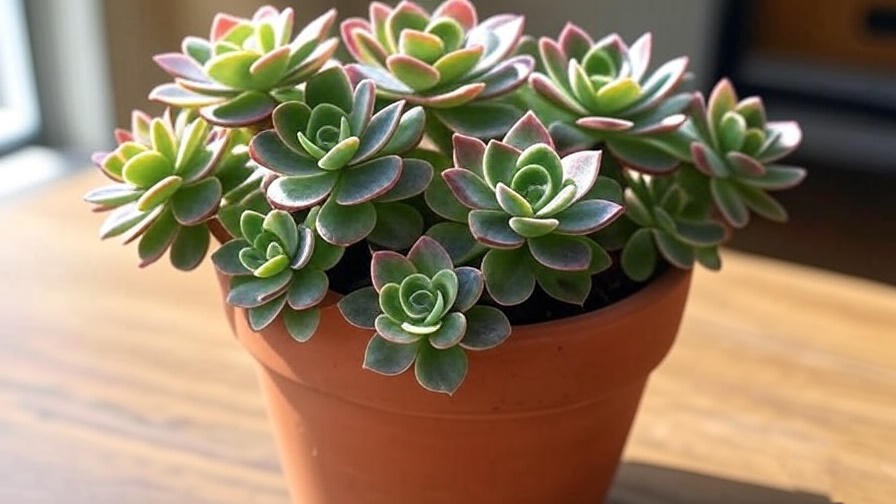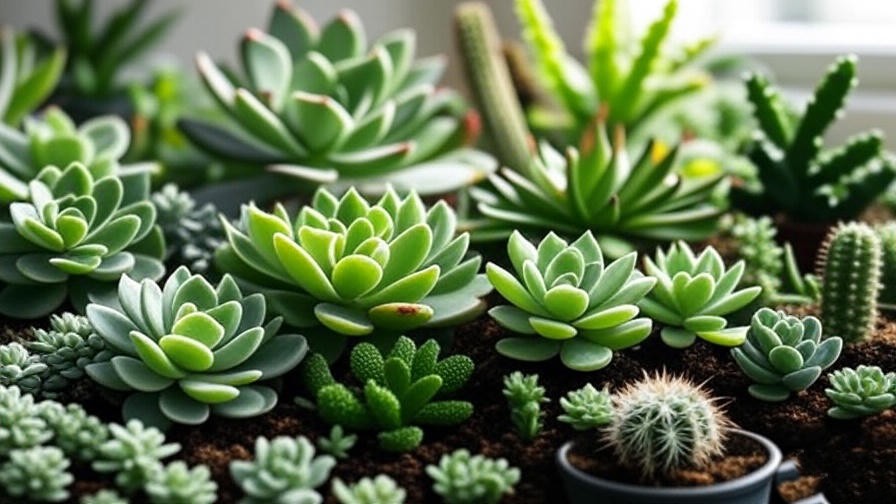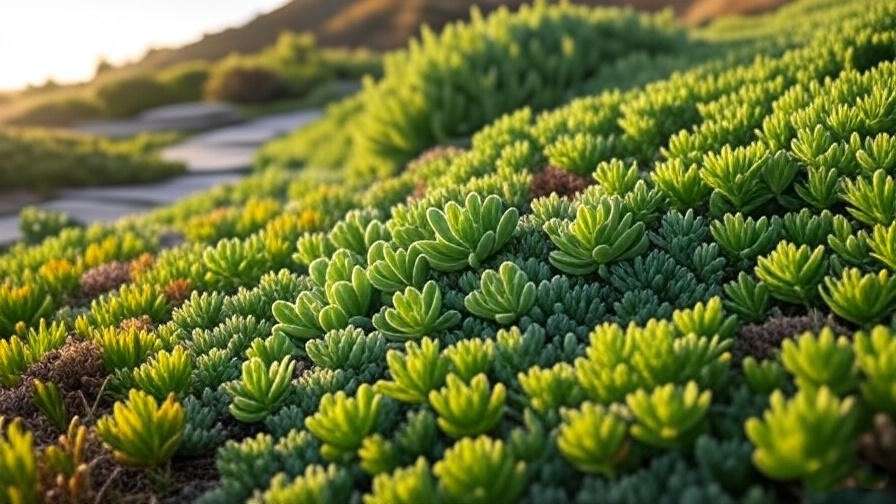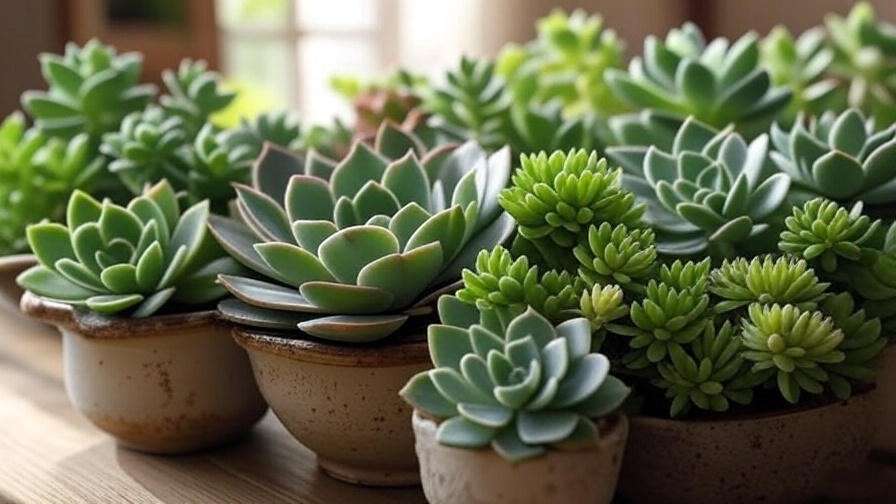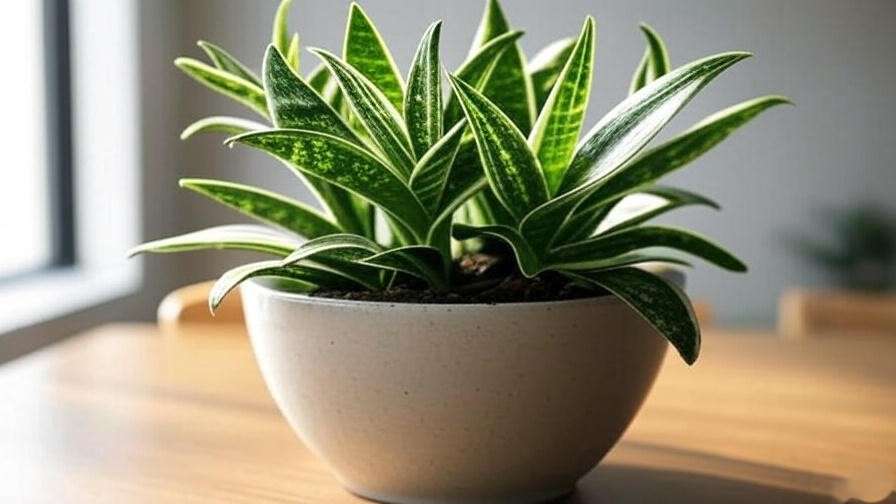Imagine holding a living plant so small it could rest comfortably on the tip of your finger. For indoor gardeners, minimalists, and plant enthusiasts alike, the smallest succulent represents the perfect fusion of beauty, simplicity, and resilience. These tiny botanical marvels require little space, thrive on minimal care, and bring an undeniable sense of calm to any environment.
As urban living spaces get smaller and our lives become more fast-paced, people are turning toward micro-gardening and low-maintenance greenery. The smallest succulent isn’t just an adorable conversation starter — it’s also a symbol of sustainability, adaptability, and mindful living.
In this comprehensive guide, you’ll discover what qualifies as the smallest succulent, which species hold the title, and how to care for these living miniatures indoors. Whether you’re working with limited apartment space or want to add life to a minimalist desk setup, this article will help you choose and nurture the tiniest succulents nature has to offer.
II. What Is the Smallest Succulent? (Understanding the Term)
Definition and Characteristics of Succulents
Succulents are plants that store water in their leaves, stems, or roots, enabling them to survive in arid and semi-arid environments. Their thick, fleshy tissues are adapted to retain moisture, allowing them to thrive where most other plants would wither. These hardy plants belong to several botanical families, including Crassulaceae, Aizoaceae, Cactaceae, and Asphodelaceae, and are renowned for their ability to flourish with minimal attention.
How “Smallest” Is Measured
When botanists or hobbyists talk about the smallest succulent, they generally refer to the mature plant’s overall size — including height, spread, and leaf diameter. Some species stay under a centimeter tall even at full maturity, while others maintain miniature growth habits due to slow growth rates or compact root systems.
Other factors include:
-
Growth pattern: Rosette, columnar, or mat-forming
-
Leaf size and thickness
-
Root depth and spread
-
Dormancy behavior — some micro-succulents shrink seasonally to conserve energy
Meet the Smallest Succulent Species Known to Date
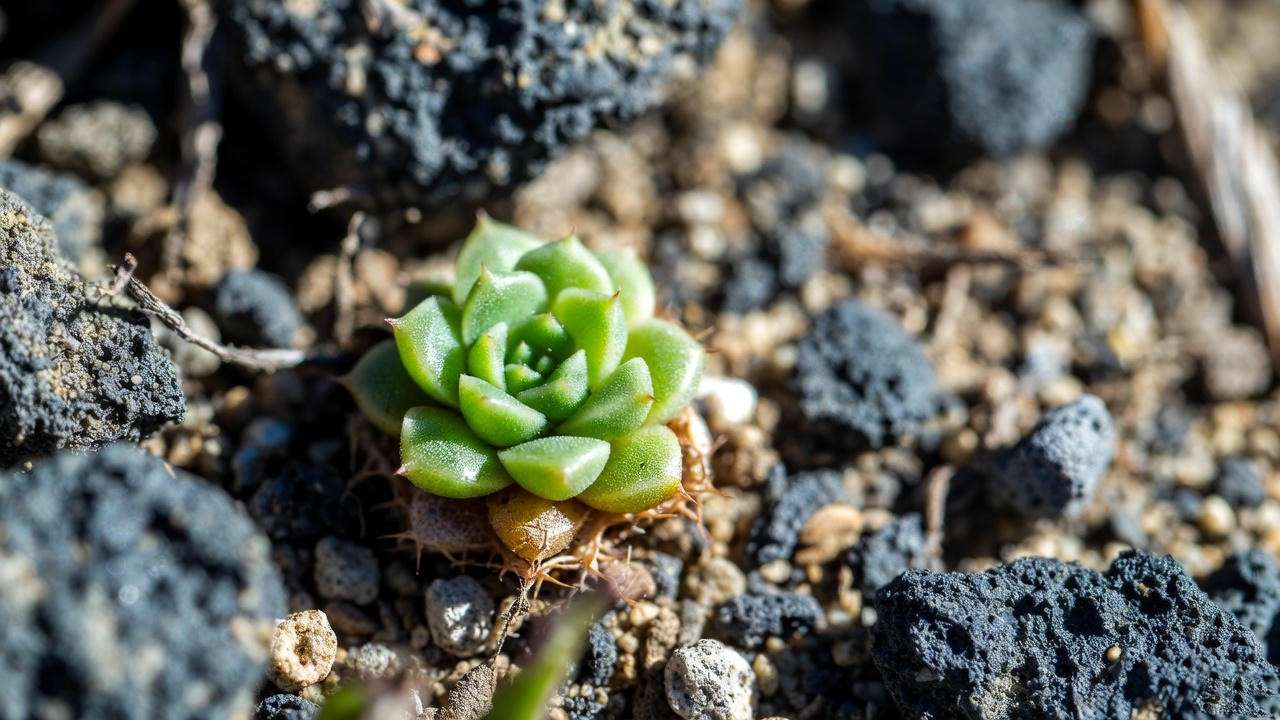
Among the contenders for the title of the smallest succulent, a few species stand out for their extraordinary miniaturization:
-
Blossfeldia liliputana — Often regarded as the smallest cactus in the world, this Bolivian and Argentine native barely reaches 1 cm in diameter. Its round, spineless form makes it look more like a tiny pebble than a cactus.
-
Lithops spp. — Commonly called “living stones,” these South African succulents mimic pebbles to avoid being eaten by animals. Some species measure just 5–10 mm tall.
-
Conophytum minimum — Another dwarf succulent from South Africa, known for its fused leaf pairs that resemble heart-shaped pebbles.
-
Sedum dasyphyllum — A micro-leaved species perfect for small containers and terrariums.
-
Haworthia cooperi var. truncata — With its transparent leaf tips and slow growth, this tiny species remains compact and stunningly ornamental.
These species prove that even the smallest plants can make a big visual impact — especially indoors.
III. Top 5 of the Smallest Succulents for Indoor Spaces
While hundreds of succulents exist in miniature form, these five species are ideal for growing indoors, even in limited light and space.
1. Lithops (Living Stones)
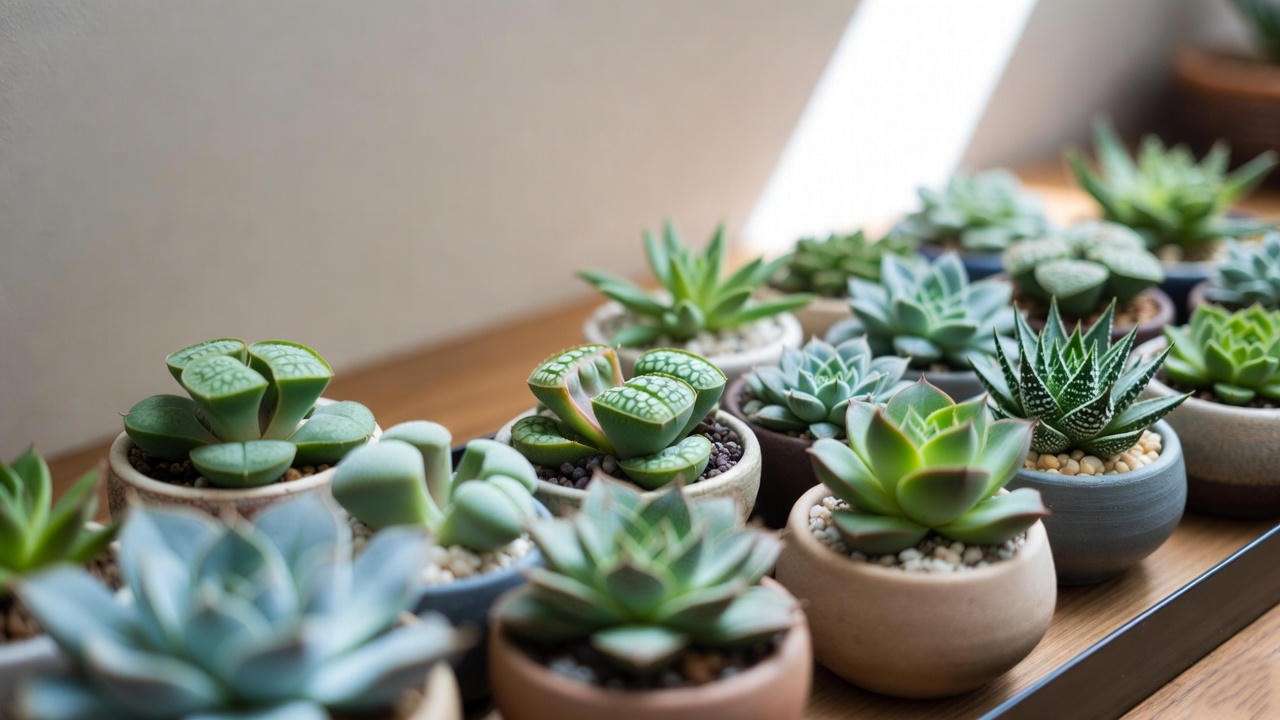
Size: 0.5–1 inch tall
Native to: Southern Africa
Lithops are true masters of disguise. Their split, stone-like leaves help them blend seamlessly into desert landscapes. Indoors, they require bright light and minimal watering — too much moisture can easily cause rot. Allow the soil to dry completely between watering, and avoid disturbing them during their winter dormancy period.
Their small size and unique appearance make them an intriguing conversation piece for desks, shelves, or minimalist displays.
2. Conophytum Minimum
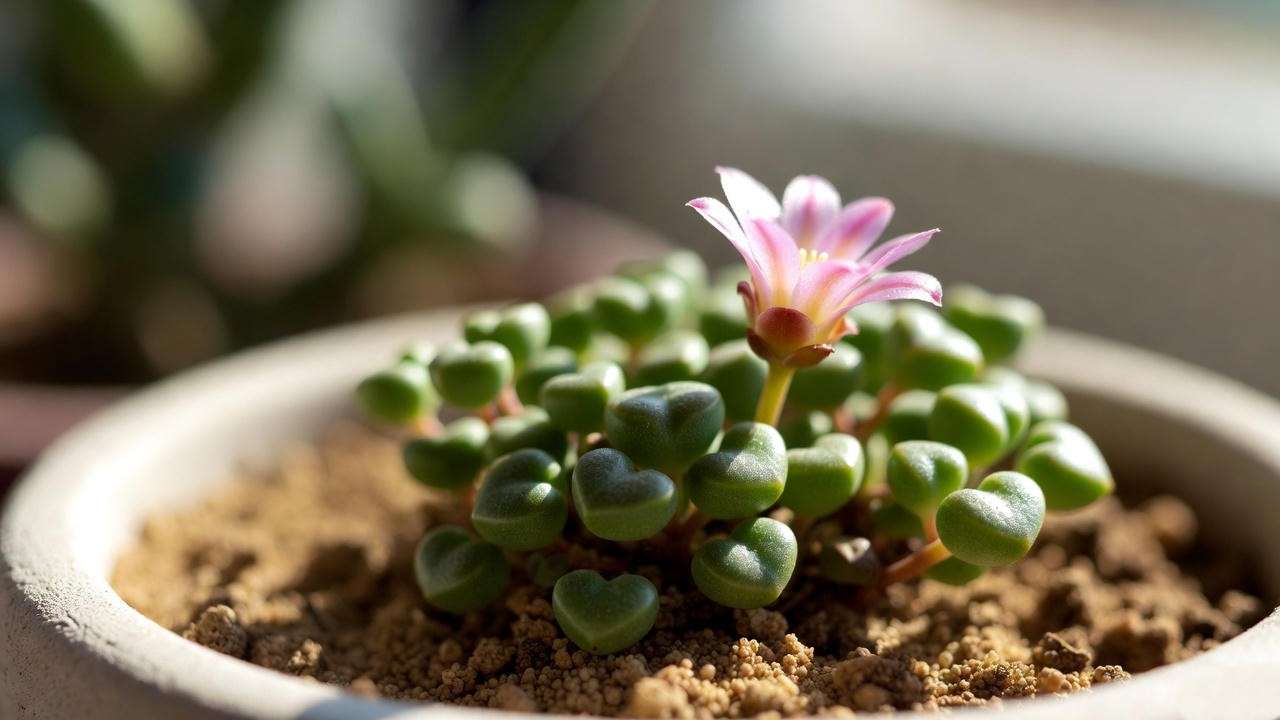
Size: About 0.5 inch tall
Native to: Northern Cape Province, South Africa
Conophytum minimum forms tiny clumps of heart-shaped leaves that merge together over time. In the fall, it produces delicate, daisy-like flowers in shades of pink or purple. Like Lithops, it requires very little water and enters dormancy in the hot summer months.
For best results, use a well-draining mineral substrate and provide bright, indirect sunlight. These little plants thrive in cool, dry indoor environments — perfect for modern homes and offices.
3. Blossfeldia Liliputana (World’s Smallest Cactus)
Size: 0.3–1 cm in diameter
Native to: Andes Mountains, Bolivia and Argentina
Blossfeldia liliputana is an awe-inspiring botanical marvel. It’s not only the smallest succulent cactus but also one of the most drought-tolerant plants on Earth. With no spines and a nearly spherical body, it often grows in rocky crevices where it collects condensation from the mountain mist.
Indoors, this cactus prefers bright, indirect light and a gritty, sand-heavy soil mix. Because it grows extremely slowly, it’s a long-term investment for collectors who value rarity and precision care.
4. Haworthia Cooperi Var. Truncata
Size: 1–2 inches tall
Native to: South Africa
With its translucent leaf tips that look like drops of dew, Haworthia cooperi is one of the most visually appealing small succulents. It tolerates lower light levels than most succulents, making it perfect for indoor environments with filtered sunlight.
Keep it in well-draining soil and water sparingly — only when the leaves begin to slightly wrinkle. Its clustered growth habit makes it easy to propagate and share with fellow plant lovers.
5. Sedum Dasyphyllum (Corsican Stonecrop)
Size: 1–2 inches tall
Native to: Europe and North Africa
This charming, trailing succulent has tiny blue-green leaves that form dense mats, ideal for hanging planters or miniature terrariums. It can tolerate a bit more moisture than desert-dwelling species and does well in bright, indirect light.
Because of its spreading nature, Sedum dasyphyllum can fill out a small arrangement quickly — making it a great complement to other tiny succulents in your indoor collection.
✅ Quick Comparison Table:
| Species | Mature Size | Light Needs | Watering Frequency | Difficulty | Best For |
|---|---|---|---|---|---|
| Lithops | 0.5–1 inch | Bright, direct light | Every 2–3 weeks | Intermediate | Desktops, minimalist decor |
| Conophytum Minimum | <1 inch | Bright, indirect | Every 3–4 weeks | Intermediate | Small terrariums |
| Blossfeldia Liliputana | <0.5 inch | Bright, indirect | Once per month | Advanced | Collectors |
| Haworthia Cooperi | 1–2 inches | Medium light | Every 2–3 weeks | Easy | Offices, indoor shelves |
| Sedum Dasyphyllum | 1–2 inches | Indirect light | Every 1–2 weeks | Easy | Hanging planters, mixed pots |
IV. Why Choose the Smallest Succulent for Indoor Gardening
In an age of micro-apartments, minimalist interiors, and busy lifestyles, the smallest succulent offers the perfect intersection of beauty, convenience, and sustainability. Whether you live in a city studio or simply want to declutter your environment, these tiny plants deliver maximum visual impact in minimal space.
Perfect for Small Living Spaces
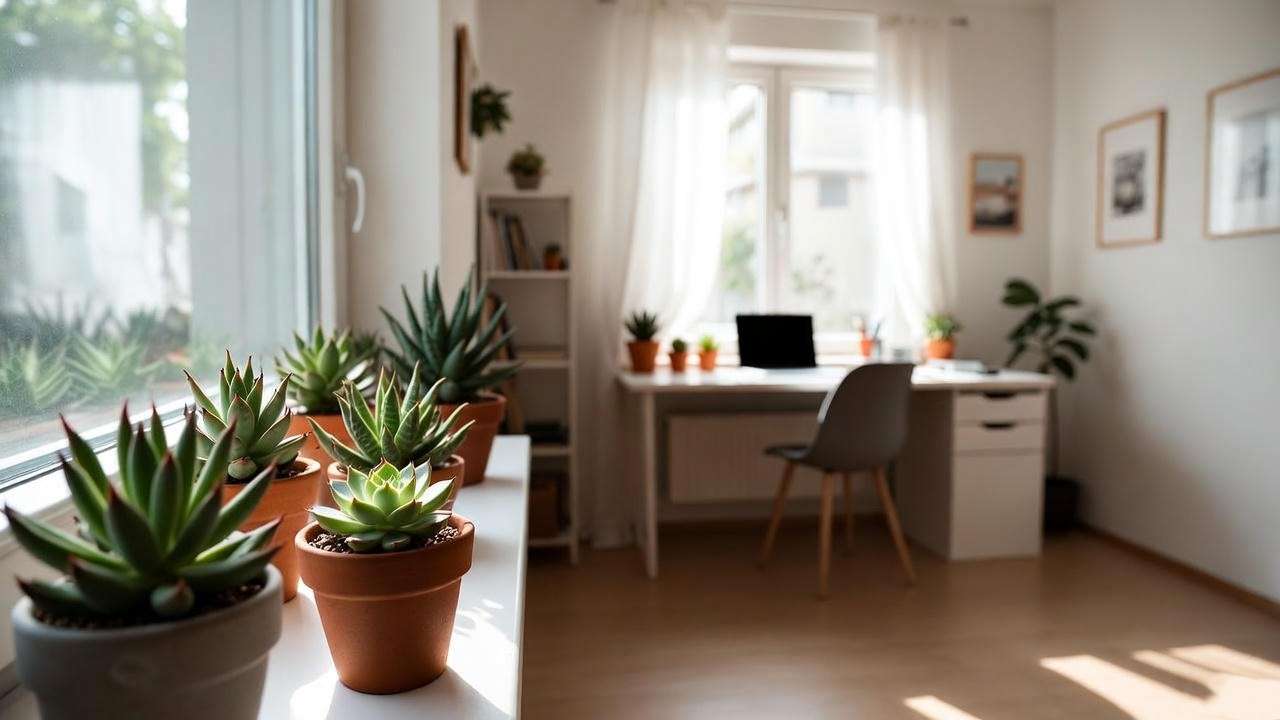
One of the most common struggles among urban dwellers is a lack of room for greenery. Large houseplants like fiddle-leaf figs or monsteras may not fit comfortably in small apartments, but the smallest succulent can thrive almost anywhere — a windowsill, desk, bookshelf, or even a teacup-sized container.
Because of their slow growth and compact form, these micro succulents don’t require frequent pruning or repotting. They’re ideal for those who want a low-commitment way to bring nature indoors without sacrificing style or space.
Low-Maintenance Beauty
Unlike many indoor plants that demand regular watering or constant light adjustments, succulents — especially tiny ones — are wonderfully forgiving. They store water efficiently, meaning they can go weeks without hydration. This makes them perfect for frequent travelers, students, or anyone who struggles to maintain a consistent watering schedule.
With the right soil and lighting, your smallest succulent can maintain its vivid color and plump form with minimal effort.
Aesthetic and Psychological Benefits
There’s a reason small plants are increasingly used in minimalist and biophilic interior design. Research shows that having greenery around — even tiny bits of it — reduces stress, boosts mood, and improves concentration.
A single Lithops or Haworthia on your work desk can serve as a grounding visual cue during hectic days. Its compact form also complements sleek, modern spaces where clutter-free design is a priority.
Eco-Friendly and Sustainable Choice
Micro succulents are champions of efficiency. They require:
-
Less water than traditional houseplants
-
Minimal fertilizer use
-
Compact growing space (reducing material waste)
Many enthusiasts also propagate their own plants, making these tiny succulents a sustainable and cost-effective hobby. For eco-conscious plant lovers, they represent a responsible way to stay connected to nature.
V. How to Care for the Smallest Succulent Indoors
While micro-succulents are easygoing, they do have unique needs. Understanding their specific requirements ensures longevity and vibrant growth.
Choosing the Right Container and Soil
The foundation of healthy succulents begins with the soil. Use a gritty, fast-draining mix — ideally one made for cacti or succulents. A good blend includes:
-
50% coarse sand or perlite
-
30% potting soil
-
20% small gravel or pumice
Avoid dense or moisture-retentive soils that trap water around the roots. For containers, select ones with drainage holes. Terracotta pots are ideal because they allow excess moisture to evaporate naturally.
If you prefer a glass terrarium, ensure the bottom has a drainage layer of pebbles or activated charcoal to prevent rot.
Watering the Right Way

Overwatering is the number one cause of succulent death — especially in smaller species with fine root systems. The soak and dry method works best:
-
Water thoroughly until it drains from the bottom.
-
Allow the soil to dry completely before the next watering.
For micro-succulents like Lithops or Conophytum, less is more. Some may only need water once every three to four weeks. Always use room-temperature water and avoid misting the leaves directly.
Pro Tip: If you’re unsure whether to water — don’t. It’s safer to underwater than overwater these plants.
Ideal Lighting and Placement
Most small succulents thrive in bright, indirect light. South- or east-facing windows are ideal. However, too much direct sunlight can scorch their tiny leaves, especially in summer.
For darker rooms, use LED grow lights (4000–6500K spectrum). Position lights 6–12 inches above the plant for 10–12 hours daily. Rotate your pots occasionally to ensure even light exposure and symmetrical growth.
Temperature and Humidity
Succulents generally prefer a temperature range of 60–80°F (15–27°C). They dislike cold drafts and high humidity. If your home tends to be humid, use a dehumidifier or ensure proper airflow around your plants.
During winter dormancy, many species (especially Lithops and Conophytum) prefer cooler, dry conditions and less water. Adjust care accordingly to mimic their natural habitat.
Fertilizing Micro Succulents
Fertilizing should be minimal. Too much nitrogen can cause weak, elongated growth.
Feed your smallest succulent once during its active growing season (spring or early summer) with a diluted succulent fertilizer — about one-quarter of the recommended strength.
Avoid fertilizing during dormancy or in winter.
VI. Propagation and Repotting: Keeping Your Tiny Succulents Healthy
Propagation is one of the joys of growing succulents — and even the smallest ones can reproduce with patience and care.
Propagation Techniques

-
Leaf Cuttings:
Some succulents like Sedum and Haworthia can grow from a single leaf. Gently twist off a healthy leaf, let it callous for a few days, and place it on top of dry soil. Mist lightly until roots form. -
Division:
Mature clumps (especially Conophytum and Haworthia) can be divided into smaller clusters. Each offset should have its own root system. -
Seed Propagation:
For rare species like Blossfeldia, propagation by seed is possible but requires patience — germination may take weeks. Use a sterile, sandy medium and keep it lightly moist under a humidity dome.
Repotting Without Damage
Because micro-succulents grow slowly, they rarely need repotting — typically every 2–3 years. When you do repot:
-
Handle the plant gently with soft tweezers or by the base.
-
Use a dry soil mix initially, then water lightly after a week.
-
Avoid burying the plant deeper than before; this can cause stem rot.
Common Mistakes to Avoid
-
Overwatering: The most common killer of small succulents.
-
Wrong soil: Dense soil retains too much moisture.
-
Improper lighting: Low light causes stretching or fading.
-
Neglecting dormancy cycles: Each species has specific rest periods.
By avoiding these pitfalls, your smallest succulent can live happily for years.
VII. Styling Ideas: Decorating with the Smallest Succulent
Beyond their horticultural charm, tiny succulents make stunning design elements. Here’s how to display them creatively in your home or office.
Mini Terrariums and Micro Gardens

A clear glass terrarium can transform your small succulents into living art. Combine different textures — like Sedum dasyphyllum with Haworthia cooperi — for a dynamic miniature landscape.
Add decorative sand, small stones, or tiny figurines to create personality and visual contrast.
Desk and Shelf Arrangements
For a minimalist workspace, a single Lithops in a ceramic cup or a trio of Haworthia in geometric planters adds life without clutter. Mix plant varieties of similar size but contrasting color for a modern, balanced aesthetic.
Gifts and Favors
Tiny succulents make sustainable, meaningful gifts. They symbolize endurance and self-sufficiency — perfect for weddings, corporate events, or eco-friendly celebrations.
Consider presenting them in biodegradable pots or recycled containers for an added eco-conscious touch.
Design Inspiration Gallery (for Article Visuals)
To maximize engagement and SEO potential:
-
Include lifestyle photos of mini-succulent arrangements.
-
Use descriptive alt-text like “tiny Haworthia cooperi on minimalist desk” or “Lithops in white ceramic pot.”
-
Showcase different lighting setups (sunny window, office shelf, terrarium).
Visual inspiration keeps readers engaged and improves discoverability in Google Images and Discover.
VIII. Troubleshooting: Common Problems and How to Fix Them
Even the toughest succulents can encounter issues when grown indoors. Fortunately, most problems are easy to identify and correct once you know what to look for.
Shrinking or Wrinkled Leaves

Cause: Underwatering or excessive sunlight
Solution: If your succulent’s leaves appear shriveled, give it a deep soak and then let the soil dry completely before watering again. Move the plant to a spot with bright, indirect light rather than direct, scorching rays.
Expert Tip: Tiny species like Lithops naturally shrink during dormancy to conserve moisture — don’t mistake this for distress.
Rotting or Mushy Leaves
Cause: Overwatering or poor drainage
Solution: Remove the plant from its pot, trim away any blackened roots, and replant in a dry, fast-draining mix. Always ensure containers have drainage holes.
Rot can be fatal quickly in small succulents because of their fine roots, so prevention is key.
Lack of Growth or Color
Cause: Insufficient light or improper dormancy cycle
Solution: Move your plant to a brighter location or use a grow light. Some species, such as Conophytum, require a rest period — they’ll resume growth once conditions mimic their natural seasonal changes.
Pest Control for Tiny Plants
Even micro-succulents can attract pests like mealybugs or fungus gnats.
Prevention and Treatment Tips:
-
Inspect new plants before bringing them indoors.
-
Wipe leaves gently with a cotton swab dipped in isopropyl alcohol to remove pests.
-
Improve air circulation to prevent fungal issues.
Using natural, non-toxic methods ensures your smallest succulent stays healthy — and safe for indoor air quality.
IX. Expert Insights and Real-World Experience
Horticulturist Insight
According to Dr. Mia Carver, a succulent specialist with over 20 years of research in xerophytic plants, “Micro-succulents like Lithops and Blossfeldia demonstrate an extreme evolutionary adaptation — their small size reduces water loss and allows them to thrive in some of the planet’s harshest ecosystems. Indoors, this makes them remarkably resilient, as long as growers respect their natural cycles.”
Personal Experience: Growing the Smallest Succulents Indoors
Having cultivated dozens of small succulent varieties over the past decade, I can attest that success lies in patience and restraint. The most common mistake among beginners is over-caring — too much water, too much attention.
When I first grew Blossfeldia liliputana, I watered it once every 30 days, kept it near an east-facing window, and used a fine pumice mix. It barely grew for the first six months — but after a year, the plant had doubled in size and developed new offsets.
The key takeaway? Trust the plant’s natural rhythm. These micro species grow slowly but reward you with longevity and character that larger houseplants can’t match.
X. Frequently Asked Questions (FAQ)
(Structured for SEO and voice search optimization.)
1. What is the world’s smallest succulent plant?
The title typically goes to Blossfeldia liliputana, a South American cactus measuring less than one centimeter in diameter at maturity — making it the smallest known succulent on Earth.
2. How do you care for tiny succulents indoors?
Provide bright, indirect light, use well-draining soil, and water only when the soil is completely dry. Avoid overwatering and maintain moderate temperatures (60–80°F).
3. Can the smallest succulents grow without sunlight?
While no succulent can thrive in complete darkness, some — like Haworthia cooperi — tolerate low light better than others. In darker rooms, use an LED grow light to supplement natural light.
4. What soil is best for mini succulents?
A gritty mix designed for cacti works best. Combine potting soil, coarse sand, and pumice or perlite in roughly equal parts for optimal drainage.
5. How often should I water my micro-succulent?
Most small succulents need watering every 2–4 weeks, depending on humidity and temperature. Always err on the side of underwatering — these plants store moisture in their leaves for survival.
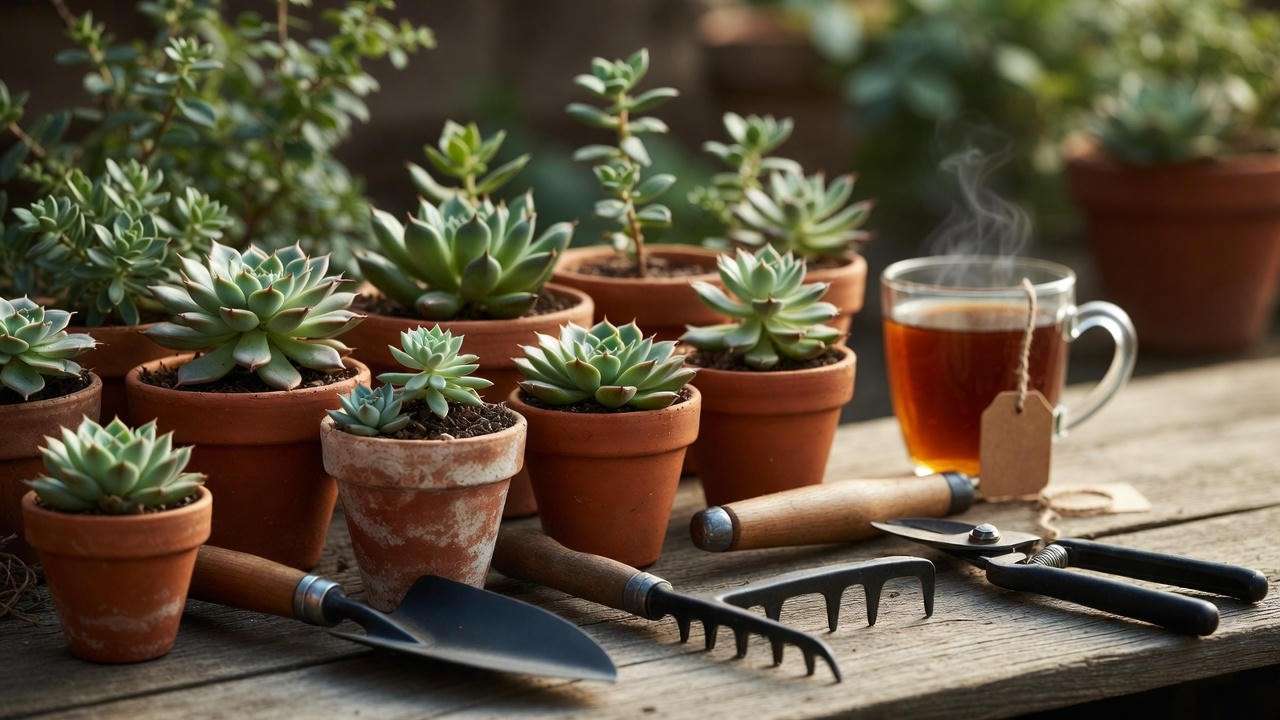
XI. Conclusion: Big Joy in the Smallest Forms
The smallest succulent may be tiny in stature, but it delivers outsized rewards. From Lithops that mimic stones to Blossfeldia that grows like a grain of sand, these plants embody resilience, adaptability, and quiet beauty.
In a world that often moves too fast, cultivating a tiny succulent is a gentle reminder to slow down, observe, and appreciate life’s small wonders. Whether you’re designing a minimalist workspace or curating a micro indoor garden, these plants bring harmony, creativity, and calm to any setting.


